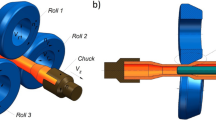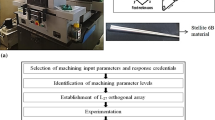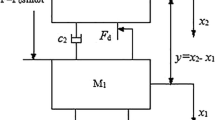Abstract
Reasonable backside weld geometry of the root-pass welding is the basic guarantee for good fatigue performance of the weld joints. In the vertical-up (3G) position welding, the change in the force direction on the molten pool makes the degree of penetration reduced, such that a small disturbance in the welding process will lead to uneven weld geometry and discontinuous weld penetration states. In order to obtain a good weld penetration state for root pass by cold metal transfer (CMT) welding in the vertical-up position, a control strategy applicable to CMT root-pass welding was proposed. The backside weld width (Wb) is related to the welding heat input (q) and the peak current time ratio (PTR). As per that base current almost does not affect the long period, and the long period tends to disappear in the range with small peak current or wire feed speed, a welding program with a stable PTR was designed, and the Wb prediction model was simplified to be only related to q. Based on the simplified model, a fuzzy controller was designed and its control effects for Wb in the CMT root-pass welding were tested. The test results proved the validity of the control strategy under normal fit-up conditions and the condition with varying misalignments.

















Similar content being viewed by others
Data availability
The datasets generated during and/or analyzed during the current study are available from the corresponding author on reasonable request.
Code availability
The codes are not publicly available due to the commercial restriction.
Abbreviations
- e :
-
Error between \(\widehat{q}\) and q* in the control system, J/mm
- E :
-
Fuzzy variable for e
- ec :
-
The change in error, J/(mm·s)
- E C :
-
Fuzzy variable for ec
- I :
-
Welding current, A
- \(\widehat{\text{I}}\) :
-
Welding current data by Hall sensor, A
- I b :
-
Welding current in base current stage, A
- I p :
-
Welding current in peak current stage, A
- I sc :
-
Welding current in short-circuiting current stage, A
- L PR :
-
Long period ratio, i.e., the ratio of the number for long periods over the number for all periods, %
- n :
-
Total number of periods (or cycles) in the calculation
- PTR :
-
Peak current time ratio, i.e., the average ratio of peak current time over the welding time, %
- q :
-
Welding heat input, J/mm
- \(\widehat{\text{q}}\) :
-
Output of the control system, J/mm
- q * :
-
Reference (or expected output) of the control system, J/mm
- \({q}_{\mathrm{b}}\) :
-
Heat input for a base current stage, J/mm
- \({q}_{i}\) :
-
Heat input in period i, J/mm
- \({q}_{\mathrm{p}}\) :
-
Heat input for a peak current stage, J/mm
- \({q}_{\mathrm{sc}}\) :
-
Heat input for a short-circuiting current stage, J/mm
- t :
-
Time, s
- t b :
-
Base current time, ms
- t p :
-
Peak current time, ms.
- t sc :
-
Short-circuiting current time, ms
- U :
-
Arc voltage, V
- \(\widehat{\text{U}}\) :
-
Arc voltage data by Hall sensor, V
- U b :
-
Arc voltage in base current stage, V
- U p :
-
Arc voltage in peak current stage, V
- U sc :
-
Arc voltage in short-circuiting current stage, V
- u c :
-
The input of control system, i.e., the increment of vf, m/min
- U C :
-
Fuzzy variable for uc
- v :
-
Welding speed, m/min
- v f :
-
Wire feed speed, m/min
- W b :
-
Backside weld width, mm
- W b * :
-
Expected backside weld width, mm
References
Kumar NP, Devarajan PK, Vendan SA et al (2017) Prediction of bead geometry in cold metal transfer welding using back propagation neural network. Int J Adv Manuf Technol 93:385–392
Nandan G, Kumar G, Arora KS et al (2022) MIG and CMT brazing of aluminum alloys and steel: a review. Mater Today: Process 56(1):481–488
Selvi S, Vishvaksenan A, Rajasekar E (2018) Cold metal transfer (CMT) technology – an overview. Def Technol 14(1):28–44
Kim JS, Lee JP, Park MH et al (2014) A study on prediction of the optimal process parameters for GMA root-pass welding in pipeline. Procedia Eng 97:723–731
Chen ZD, Wang ZJ, Wang FR et al (2023) Feasibility study on sensing and prediction of backside weld geometry in cold metal transfer welding of X65 pipeline in vertical-up position. J Manuf Processes 85:1173–1186
Fan CJ, Lv FL, Chen SB (2009) Visual sensing and penetration control in aluminum alloy pulsed GTA welding. Int J Adv Manuf Technol 42(1–2):126–137
Chen H, Lv F, Lin T et al (2009) Closed-loop control of robotic arc welding system with full-penetration monitoring. J Intell Robot Syst 56(5):565–578
Wang ZJ, Zhang YM, Wu L (2012) Adaptive interval model control of weld pool surface in pulsed gas metal arc welding. Automatica 48(1):233–238
Zou SY, Wang ZJ, Hu SS et al (2020) Control of weld penetration depth using relative fluctuation coefficient as feedback. J Intell Manuf 31:1203–1213
Cao Y, Wang ZJ, Hu SS et al (2021) Modeling of weld penetration control system in GMAW-P using NARMAX methods. J Manuf Process 65:512–524
Lv N, Xu YL, Li SC et al (2017) Automated control of welding penetration based on audio sensing technology. J Mater Process Technol 250:81–89
Aviles-Vias JF, Rios-Cabrera R, Lopez-Juarez I (2016) On-line learning of welding bead geometry in industrial robots. Int J Adv Manuf Technol 83(1):217–231
Lou YJ (1998) Intelligent control for pulsed GTAW dynamic process based on image sensing of weld pool. Dissertation, Harbin Institute of Technology (in Chinese)
Chen SB, Lou YJ, Wu L et al (2000) Intelligent methodology for sensing, modeling and control of pulsed GTAW: part 1 - bead-on-plate welding. Weld J 79(6):151s–163s
Tsai CH, Hou KH, Chuang HT (2006) Fuzzy control of pulse GTA welds by using real-time root bead image feedback. J Mater Process Technol 176(1–3):158–167
Gao XD, Huang SS, Yu YL (2000) Fuzzy neural networks for control of penetration depth during GTAW. China Weld 9(1):1–8
Wang ZJ, Zeng ZT, Wu SJ et al (2023) Weld penetration control of wire-filled pulsed gas tungsten arc welding of pipe in the horizontal position. Weld World 67:1793–1807
Li XR, Shao Z, Zhang YM et al (2013) Monitoring and control of penetration in GTAW and pipe welding. Weld J 92:190s–196s
Li XR, Zhang YM (2014) Predictive control for manual plasma arc pipe welding. J Manuf Sci Eng 136(4):041017
Funding
This study is supported by the National Natural Science Foundation of China (Grant No.: 52375374).
Author information
Authors and Affiliations
Contributions
Zhijiang Wang: conceptualization, methodology, formal analysis, resources, writing (review and editing), funding acquisition, project administration.
Zhendong Chen: methodology, software, formal analysis, investigation, data curation, visualization, writing—original draft.
Shaojie Wu: formal analysis, validation, writing—review and editing.
Caiyan Deng: formal analysis, validation, supervision.
Zhichen Lin: software, formal analysis, data curation, writing—review and editing.
Corresponding author
Ethics declarations
Ethics approval
Not applicable.
Consent to participate
Not applicable.
Consent for publication
The authors give their consent for the publication of identifiable details, which can include photograph(s) and/or videos and/or case history and/or details within the text to be published in Welding in the World.
Conflict of interest
The authors declare no competing interests.
Additional information
Publisher's Note
Springer Nature remains neutral with regard to jurisdictional claims in published maps and institutional affiliations.
Recommended for publication by Commission XII - Arc Welding Processes and Production Systems
Rights and permissions
Springer Nature or its licensor (e.g. a society or other partner) holds exclusive rights to this article under a publishing agreement with the author(s) or other rightsholder(s); author self-archiving of the accepted manuscript version of this article is solely governed by the terms of such publishing agreement and applicable law.
About this article
Cite this article
Wang, Z., Chen, Z., Wu, S. et al. Fuzzy control of backside weld width in cold metal transfer welding of X65 pipeline in the vertical-up position. Weld World 68, 829–842 (2024). https://doi.org/10.1007/s40194-023-01649-6
Received:
Accepted:
Published:
Issue Date:
DOI: https://doi.org/10.1007/s40194-023-01649-6




